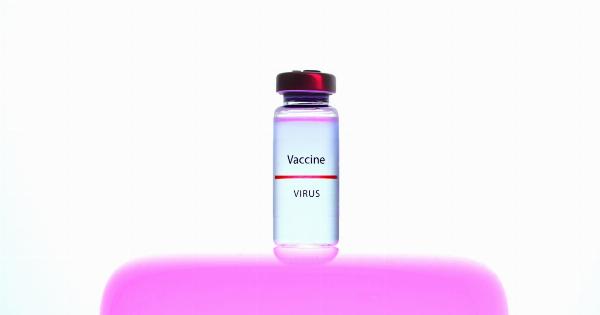Medications play an essential role in treating various diseases. However, not all ailments require medications. Some conditions can be managed without medications, and some interventions can reduce mortality rates without using drugs.
What is Mortality?
Mortality is a measure of death. It is the number of deaths in a particular population or a specific time frame. Mortality rates are used to measure the health status of a population.
The mortality rate is calculated as the number of deaths per 1000 individuals.
Causes of Mortality
There are several reasons why individuals die. Some of the common causes of mortality include:.
- Chronic illnesses such as heart disease, cancer, and diabetes
- Infectious diseases such as tuberculosis, malaria, and HIV/AIDS
- Injuries such as road accidents, falls, and burns
- Environmental factors such as air pollution and climate change.
The Role of Medications in Reducing Mortality Rates
Medications have contributed significantly to reducing mortality rates worldwide. The discovery of antibiotics, vaccines, and other life-saving drugs has saved millions of lives over the past century. For instance:.
- The discovery of penicillin in 1928 has helped to treat various bacterial infections that were once fatal.
- The discovery of insulin in 1921 has helped to manage diabetes, a chronic condition that affects millions of people worldwide.
- The development of antiretroviral therapy (ART) has helped people living with HIV/AIDS to live longer and healthier lives.
- The development of statins has helped to reduce cholesterol levels and prevent heart disease, one of the leading causes of mortality worldwide.
Therefore, medications have played an instrumental role in reducing mortality rates and improving the health status of the population. However, medications alone cannot solve all health problems.
Some conditions require non-pharmacological interventions, while others can be managed without drugs.
Non-Pharmacological Interventions that Decrease Mortality Rates
Apart from medications, non-pharmacological interventions can also reduce mortality rates. Below are some of the non-pharmacological interventions that can decrease mortality rates:.
Physical Exercise
Regular physical exercise can help to reduce mortality rates. Exercise helps to improve cardiovascular health, reduce the risk of obesity, and enhance mental health.
According to the World Health Organization (WHO), physical inactivity is a significant risk factor for chronic diseases.
Healthy Eating Habits
Eating a healthy diet can also reduce mortality rates. A diet rich in fruits, vegetables, whole grains, and lean proteins can reduce the risk of chronic diseases such as heart disease, cancer, and diabetes.
Smoking Cessation
Smoking is a leading cause of death worldwide. According to the WHO, smoking causes about 8 million deaths annually. Quitting smoking can significantly reduce the risk of developing chronic diseases and improve overall health status.
Reducing Alcohol Consumption
Excessive alcohol consumption can also increase mortality rates. Alcohol abuse can lead to liver disease, heart disease, and cancer. Reducing alcohol consumption can reduce the risk of developing these conditions and improve overall health status.
Screening for Diseases
Early detection and treatment of diseases can also reduce mortality rates. Screening for diseases such as breast cancer, cervical cancer, and colorectal cancer can increase survival rates and improve the health status of individuals.
Preventing Injuries
Preventing injuries can also reduce mortality rates. Adopting safety measures such as wearing seat belts, helmets, and protective gear can reduce the risk of injuries and prevent deaths.
Mortality Rates and COVID-19
The COVID-19 pandemic has led to an increase in mortality rates worldwide. As of May 2021, over 3.4 million people have died due to COVID-19. The pandemic has highlighted the importance of non-pharmacological interventions in reducing mortality rates.
Some of the measures that can reduce the spread of COVID-19 and prevent deaths include:.
- Wearing masks
- Social distancing
- Washing hands frequently
- Vaccination
Therefore, non-pharmacological interventions play a crucial role in reducing mortality rates and improving the health status of the population.
While medications are essential, they should be used in conjunction with non-pharmacological interventions for optimal health outcomes.
Conclusion
In conclusion, medications have played a significant role in reducing mortality rates worldwide. However, non-pharmacological interventions can also decrease mortality rates.
Physical exercise, healthy eating habits, smoking cessation, reducing alcohol consumption, screening for diseases, and preventing injuries are some of the non-pharmacological interventions that can reduce mortality rates. Therefore, a comprehensive approach that combines medications and non-pharmacological interventions is necessary to improve the health status of individuals and reduce mortality rates.





























